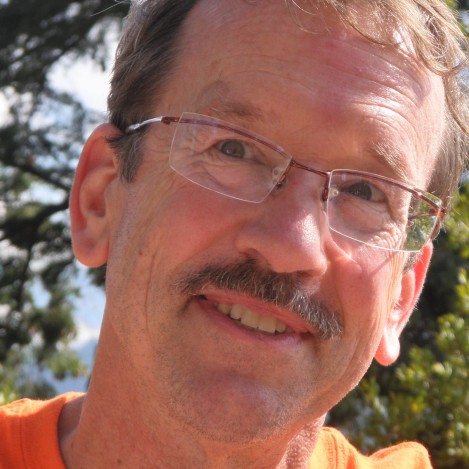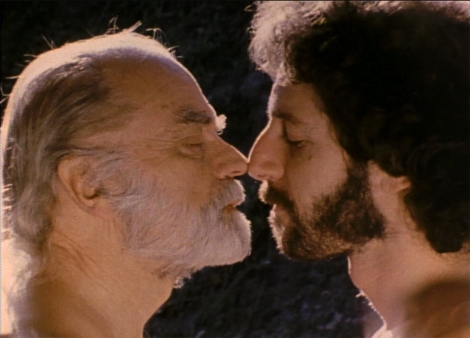
Stephen Silha is a writer, journalist, and filmmaker. His feature-length documentary, Big Joy: The Adventures of James Broughton, was co-directed by Eric Slade and editor Dawn Logsdon. Big Joy had its World Premiere at the 2013 South by Southwest (SXSW) Film Festival, and has shown to significant acclaim around the world. Now available on DVD and Video-on-Demand through Kino Lorber, the film is the first feature-length treatment of the life of late poet and avant-garde filmmaker James Broughton. Stephen Silha spoke with Sean Malin of CineMalin: Film Commentary and Criticism about the collaborative filmmaking process, getting to know avant-garde cinema, and futurism. This interview has been transcribed, edited, and compressed from e-mail for publication.
*****
Sean Malin: You come from a background in journalism, which can be handy when making investigative documentaries and conducting deep research. What kind of learned reportage skills were necessary for making this film?
Stephen Silha: Well, first of all, I really didn’t want to do a “whitewash” on James but wanted to show his full humanity. Also, we did “fact checking” … for example when Joel Singer says both James and Suzanna Hart went ‘on record’ to say they were terrible parents, we went to Suzanna a second time to see if that was true. I knew it was true about James because I had asked him myself.
However, making a doc about someone like Broughton is different from a journalistic enterprise. For example, the scene of James being washed in a bathtub which we imply is being done by Joel, is actually someone else doing the washing. Sometimes you go for a bigger truth than the “facts.”
SM: Big Joy has the unusual honor of having two directors and a third, credited co-director. What were your specialties as the director of the film in relation to those of Eric Slade and Dawn Logsdon – and what talents were you just starting to develop that Mr. Slade and Ms. Logsdon brought more fully-formed to their duties on the picture?
SS: I knew that I did not have the skills to make a first-rate documentary by myself. So I called Eric early on. We met at a coffeehouse in Portland, where he said he didn’t really know that much about Broughton, but that he’d be interested in working on the film – as long as he didn’t have to raise the money. I had really appreciated his work on Hope Along the Wind: The Story of Harry Hay in using archival footage and doing re-creations. We decided early on that we needed to include Broughton’s nude bodies, so the show probably wouldn’t be a shoo-in for PBS (where Eric has lots of experience). We worked on the initial fundraising trailer with the skilled editor Bill Weber.
Ultimately, Bill wasn’t available to edit the film, so we interviewed other editors, and Dawn (who had worked with Eric on the Harry Hay film) emerged as the best choice. As with others on the project, we bombarded her with Broughton’s books and films, and asked her to take them in. Soon, she was posting Broughton’s filmmaking aphorisms on her studio wall. (“When in doubt, cut!”) Initially, we considered Eric the director, and me the producer, but as the project moved ahead it was clear that we were both producing and directing.
When we took the project to Dawn, we had many pieces but not a sense of the whole. Together, the three of us put together a cut that was 95 minutes, and showed it to a number of people…and ultimately cut it to 82 minutes. Dawn insisted that we use the journals as the spine of the film, at least the first two acts, and for that reason (plus her editing gifts) Eric suggested we give her a co-director credit.
SM: First-time filmmakers often tell me that making an independent feature requires calling in many favors and appealing to friends’ goodwill. Did you find that that same situation applied to your team when trying to get this film off the ground?
SS: No kidding! Almost everyone on the project worked for a fraction of what they are worth. And there were a number of people – like composer Jami Sieber and animator Michael Mann – who I knew and felt would be right for the project. We involved them much earlier than you usually would, and the fact that they had steeped themselves in the material shows in the final film.
And of course we did 3 Kickstarter campaigns – one for production, one for post-production, one for distribution – which had me approaching all my friends and family multiple times. Fortunately, we got a number of gifts from hundreds of people, including some who had never heard of Broughton but were inspired by his messages.
SM: In other interviews and in your press kit bio, you describe yourself as a futurist. While I have some very basic knowledge of futurology and The New School, I’d love to know how it impacted your approach to making this film. How did your thoughts and work as a futurist contribute to your creative process?
SS: Broughton was definitely a futurist, to me, in that he expounded very specific visions for a future he saw as preferable to the present, or to other possible futures. My experiences with alternative futures go back to my youth, when I worked on designing a city of the future that was never built but which informed me about the work of Buckminster Fuller, Robert Theobald, Ivan Illich, John Holt, Alvin Toffler, Barbara Marx Hubbard, and many others.
I took a “long view” – trying to make a film that would inform the future, and be as much fun to watch in 2113 as in 2013. I am also aware of the subtle choices we made – especially inviting the audience to make up their own minds instead of telling them what to think – that were informed by my own futurism. In my work with journalists, we have tried to instill a new question in addition to “Who what where when why” – the 6th w being “What’s possible now?” I guess I wanted this question to pervade the film, so people would be inspired by James’s story to reimagine their possibilities.
SM: Though Big Joy has a unique perspective and clever storytelling devices – the narrated journal entries, audio voiceover clips, poetry readings – it is a far more classically narrative film than those of its subject, James Broughton. Did you ever consider a more abstract or experimental formal approach to the filmmaking itself?
SS: Yes, but we decided we didn’t want to try to mimic Broughton’s films, just to be inspired by them.

SM: Though Broughton achieved a bit of fame in his career, so few avant-garde filmmakers are known outside their respective communities, be they in San Francisco, New York, Ann Arbor, Chicago, or Austin. What was your relationship to experimental film when you started developing this project?
SS: I considered myself relatively illiterate as far as experimental film before diving into the documentary. I have appreciated experimental film in art galleries, etc, and remember going to some of the experimental films of the 1960s and 70s, but really had little knowledge until meeting James.
SM: How have audiences more closely associated or familiar with American avant-garde cinema responded to the film, given the minor disconnect between its documentary format and Broughton’s individual work?
SS: Most people closest to Broughton have loved the doc. The critics of the documentary format have been experimental film buffs who would have liked to see us do something more poetic. (I myself argued for a more poetic approach, but was outvoted by my co-directors and because of my newness to the process, in this case I deferred to them.)
SM: Broughton had many notable friends and fans that appear in the film, in some form or another: Pauline Kael, Armistead Maupin, Stan Brakhage, Anna Halprin. Were there any cultural figures of note, or of your own personal interest, associated with James that weren’t included in the film, for the sake of running time or story?
SS: Yes, we interviewed 37 people — including Malcolm Boyd, Mark Thompson, Penelope Wong, Michael Hathaway, Collin Brown – and 17 never got into the film! I would have loved to interview Gary Snyder and Michael McClure – but neither of them were willing.
SM: Among those friends is the late avant-garde legend George Kuchar, one of my favorite filmmakers. Is your film known to be Kuchar’s final appearance onscreen?
SS: I believe you are correct. If you listen to the Directors’ comments on It Came From Kuchar, he talks with Jennifer Kroot about being in the Broughton film.
SM: Your film features extensive clips from Broughton’s work, but even in 2014, some of his images of nude and queer bodies feel radically independent. You and your team have now shown this film all over the world – have you come into contact with audiences that have been challenged or put off by his work?
SS: I was surprised that even in Hong Kong, Broughton’s films are very popular. There, the retrospectives of his films had larger audiences than Big Joy. In Poland, the people who came to see the film were delighted, but the audiences were small…and the same was true in Ireland.
SM: I read that you met Broughton at a Radical Faeries gathering. Would you describe this film as an extension of your participation in the group? Is Big Joy: The Adventures of James Broughton a radical film?
SS: I’m not sure it’s a radical film, but Broughton was certainly a radical artist, and to the extent that Big Joy gets people closer to their roots, it’s radical. And I do consider the film a gift from the radical faerie community to the dominant culture.
SM: Now that you’ve transitioned from freelance journalist and writer to director of an acclaimed feature-length documentary, do you see filmmaking as your new creative route?
SS: I do. I’m thinking now about a second feature doc… about a very different subject. I love the multi-dimensionality of filmmaking.

